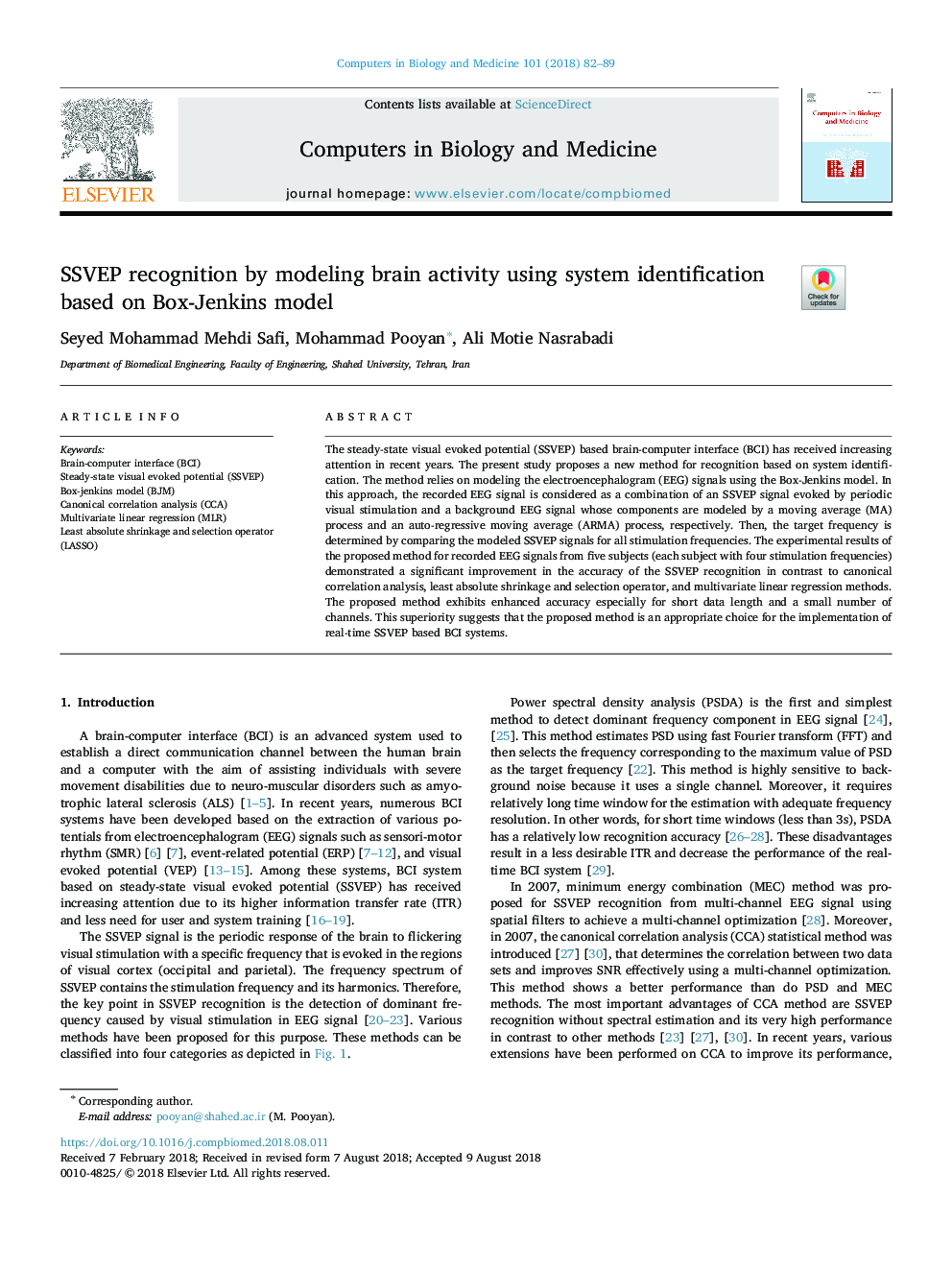| Article ID | Journal | Published Year | Pages | File Type |
|---|---|---|---|---|
| 6920382 | Computers in Biology and Medicine | 2018 | 8 Pages |
Abstract
The steady-state visual evoked potential (SSVEP) based brain-computer interface (BCI) has received increasing attention in recent years. The present study proposes a new method for recognition based on system identification. The method relies on modeling the electroencephalogram (EEG) signals using the Box-Jenkins model. In this approach, the recorded EEG signal is considered as a combination of an SSVEP signal evoked by periodic visual stimulation and a background EEG signal whose components are modeled by a moving average (MA) process and an auto-regressive moving average (ARMA) process, respectively. Then, the target frequency is determined by comparing the modeled SSVEP signals for all stimulation frequencies. The experimental results of the proposed method for recorded EEG signals from five subjects (each subject with four stimulation frequencies) demonstrated a significant improvement in the accuracy of the SSVEP recognition in contrast to canonical correlation analysis, least absolute shrinkage and selection operator, and multivariate linear regression methods. The proposed method exhibits enhanced accuracy especially for short data length and a small number of channels. This superiority suggests that the proposed method is an appropriate choice for the implementation of real-time SSVEP based BCI systems.
Keywords
Related Topics
Physical Sciences and Engineering
Computer Science
Computer Science Applications
Authors
Seyed Mohammad Mehdi Safi, Mohammad Pooyan, Ali Motie Nasrabadi,
